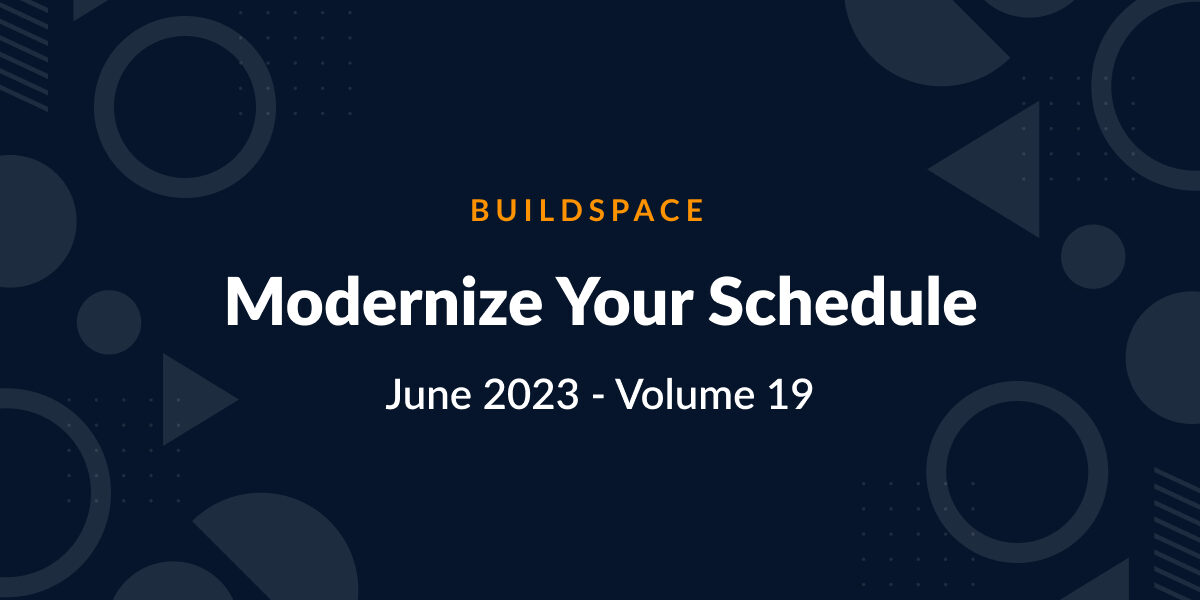The Power of Precon Planning
BuildSpace
NOVEMBER 2023 - VOLUME 24
As we embark on a new month in the construction management sector, let's quickly recap our last discussion on the Critical Path Method (CPM). More than just a tool, CPM is a strategic approach crucial for setting and achieving project timelines effectively. It helps project managers identify key activities and manage resources efficiently, streamlining workflows and foreseeing possible delays. [Revisit last month’s insights here].
Following our exploration of CPM, this month's focus shifts to the importance of pre-construction planning. This phase is fundamental in shaping a project's success, involving critical decision-making about design, scope, and execution strategies.
Understanding the nuances of pre-construction planning is crucial for ensuring project efficiency and stakeholder satisfaction. Let's dive into why this stage is pivotal and how it can make or break the success of your construction projects.
The Imperative of Pre-Construction Planning
The pre-construction phase is where the foundation of a successful project begins. This stage is a confluence point for owners, design teams, and project delivery groups. The decisions made here are pivotal, shaping the project’s trajectory. In this early phase, any potential issues must be identified and resolved. The earlier we address these, the more streamlined the project becomes, benefiting all stakeholders involved.
Balancing Stakeholder Needs
Project managers routinely juggle the diverse needs and expectations of multiple stakeholders. This balancing act is critical in aligning visions with realistic outcomes, particularly regarding budget constraints and project specifications.
The High Cost of Inadequate Pre-Construction Planning
Neglecting the crucial pre-construction planning phase can lead to significant setbacks and escalated costs in construction projects. Without this foundational planning, projects are prone to misaligned objectives, unforeseen complications, and resource mismanagement, resulting in costly delays and budget overruns. The lack of a clear scope or inadequate feasibility studies often leads to changes mid-project, increasing expenses, and extending timelines. Failure to properly vet contractors and vendors or to secure necessary permits can also lead to compliance issues and legal entanglements, further inflating costs and damaging the project’s overall viability. In essence, skimping on pre-construction planning is a risk that can transform manageable projects into financial and logistical dilemmas.
Essential Steps in Pre-Construction Planning
To mitigate risks, it’s essential to adhere to critical pre-construction steps. These include outlining the project charter, goals, and objectives for clarity; conducting feasibility studies to assess viability; establishing a clear scope of work, developing a detailed timeline and budget; and choosing an appropriate project delivery method. It’s also crucial to secure the necessary resources, select an adept project management team and contractors, and vet vendors while negotiating contracts.
Ensuring compliance through securing permits and licenses, implementing a unified project management platform like Linarc, creating comprehensive risk and change management plans, and defining effective communication protocols are all fundamental to the success of a construction project.
Advantages of Construction Management Software Over Manual Methods
While seemingly cost-effective, traditional manual methods in construction management often result in significant financial losses, particularly in large-scale projects with multiple teams and stakeholders. Due to inefficient information exchange, the human error inherent in these methods leads to data inaccuracies, miscommunication, and delays. Such errors and inefficiencies frequently cause project delays and budget overruns, negating initial savings.
In contrast, construction management software like Linarc introduces efficiency, precision, and collaboration unattainable with manual methods. Linarc's digital approach dramatically reduces risks associated with manual errors and information gaps.
It provides real-time updates, accurate data management, and streamlined communication across all project phases. This keeps teams in sync and significantly lowers the financial risks often incurred through the inefficiencies of manual project management. Choosing Linarc is an investment in safeguarding your project against the costly drawbacks of traditional methods.
Looking Ahead
As we continue to navigate the challenges and opportunities in construction management, Linarc remains dedicated to providing solutions that streamline processes and foster growth and innovation in this dynamic field.
Until next month, let’s keep building a more innovative, more efficient future together.
Are you ready to revolutionize your construction projects?
Want to see how Linarc’s cloud-based software built for construction can help you proactively plan your next construction project?
We invite you to a free 21-day trial of our Construction Planning Software – experience the power of our platform and take your project management, operations, and collaboration to the next level.










